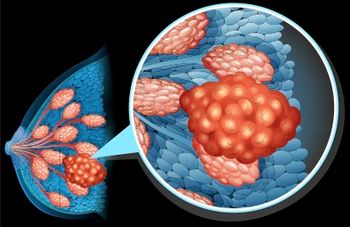
Adding MRI to Mammography Could Help Find Aggressive Breast Cancer
MRI can detect a larger tumor burden than detected by mammography alone, potentially changing treatment, according to a recently published study.
Breast imaging with magnetic resonance imaging (MRI) can detect a larger tumor burden than can mammography alone, which could impact treatment decisions, according to a study
The benefit of breast MRI for breast cancer detection has been debated. MRI is a sensitive technique that has been used to screen high-risk patients, younger women with denser breasts in whom mammography is not always able to detect cancerous tissue, and as part of pre-operative imaging. Whether additional tumor tissue detectable with MRI is biologically and clinically relevant for certain patients remains unclear.
“Patients with clinically insignificant cancers undergoing potential overtreatment vs patients who may be undertreated is at the heart of the controversy surrounding breast MRI,” said lead author Chiara Iacconi, MD, of the Breast Unit at USL1 Massa-Carrara in Carrara, Italy, in a
In the current study, Iacconi and colleagues assessed the clinical utility of identifying additional breast cancer using MRI. They reviewed records from 2001 to 2011 of women who had detection of at least one additional suspicious lesion with MRI and had a biopsy performed that showed cancer within 6 months of the imaging.
The 73 cases where additional breast cancer was detected by MRI in a different quadrant formed the basis of the study. In 4 (5%) of the 73 patients, previously undetected invasive disease and higher tumor grade were found by MRI. In 17 (23.3%) of the 73 cases, the tumor tissue identified was larger than the previously identified cancer and in 18 cases (25%) the tumor was greater than 1 cm in size.
These additional breast tumors were mostly identified among patients with extremely dense or heterogeneously dense breasts.
“We believe invasive cancer larger than 1 cm is clinically relevant disease,” said Iacconi said. “In general, it is accepted that radiation can likely treat invasive cancer less than 1 cm, but lesions larger than 1 cm, especially invasive carcinomas, may not be reliably treated with conservation.”
Additional cancer detected with breast MRI that was not identified with mammography appears to represent a larger tumor burden in about 25% of patients and can “upstage the diagnosis, resulting in potential changes in treatment,” concluded the study authors.
Newsletter
Stay up to date on recent advances in the multidisciplinary approach to cancer.


















































































